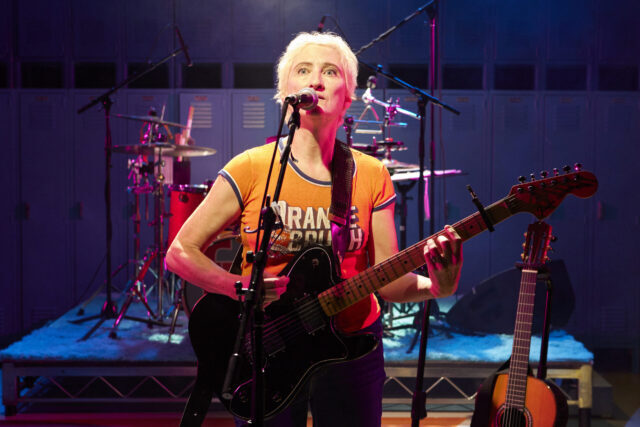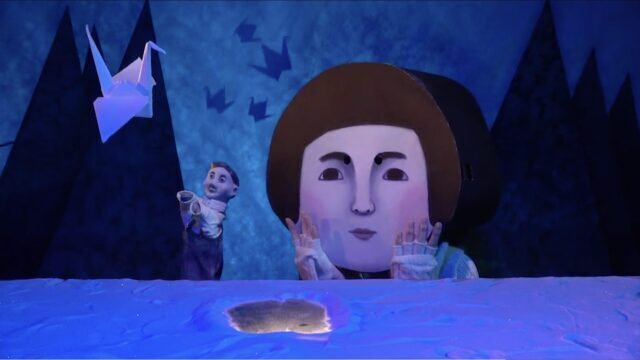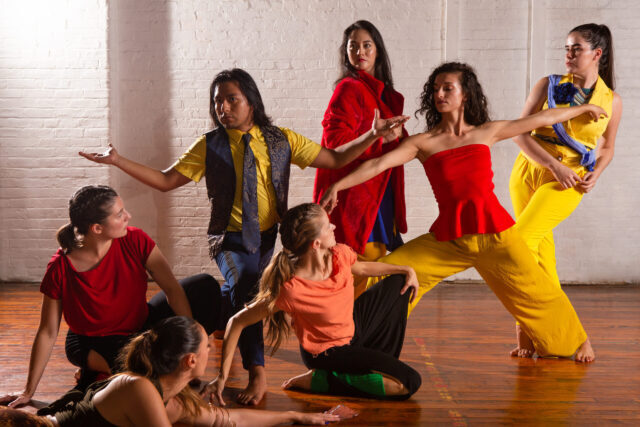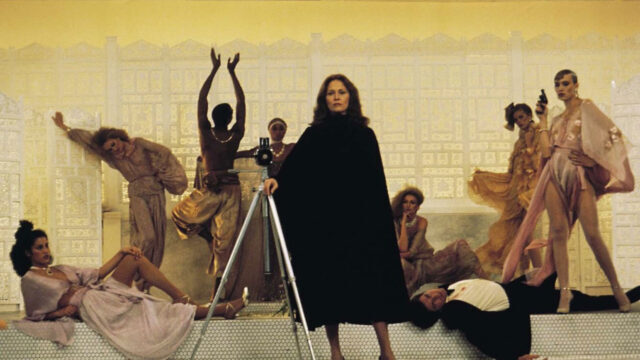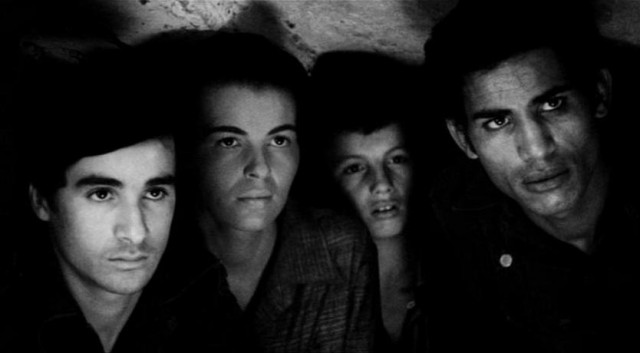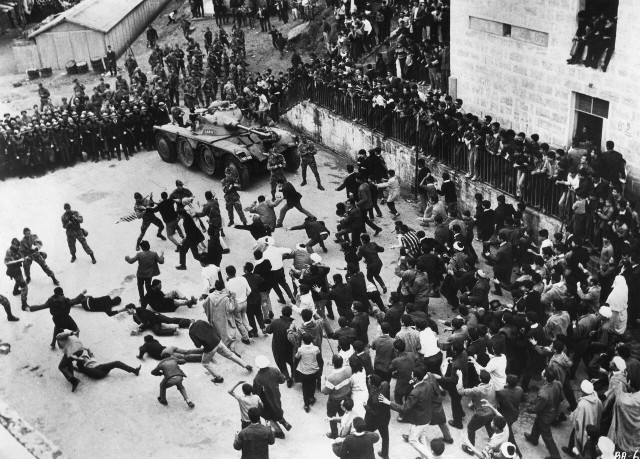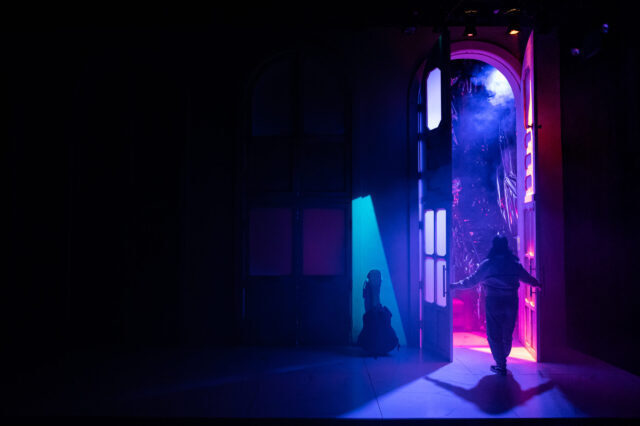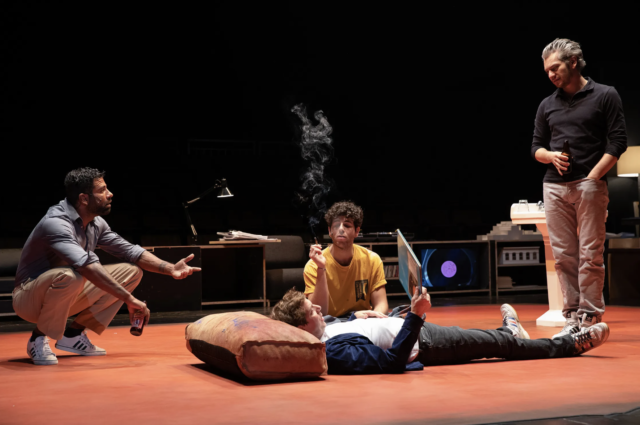
Ivo van Hove brilliantly stages Hanya Yanagihara’s epic novel at BAM (photo © Julieta Cervantes)
A LITTLE LIFE
Brooklyn Academy of Music
BAM Howard Gilman Opera House
30 Lafayette Ave. between Ashland Pl. & St. Felix St.
October 20-29, $45-$180
718-636-4100
www.bam.org
ita.nl/en
“You are so damaged,” Willem Ragnarsson (Maarten Heijmans) tells Jude St. Francis (Ramsey Nasr) in Ivo van Hove’s brilliant staging of Hanya Yanagihara’s 2015 bestselling novel, A Little Life, continuing at BAM’s Howard Gilman Opera House through October 29. It’s 250 minutes — with one blessed intermission — of torture porn of the highest order, a tragic tale that takes the emotional tenor of Lars von Trier’s Breaking the Waves and Aki Kaurismäki’s The Match Factory Girl to another level.
Adapted by Koen Tachelet and translated by Kitty Pouwels and Josephine Ruitenberg, the play is presented in Dutch with English supertitles. The first act can be confusing as the story develops; as with many works by von Hove and his Internationaal Theater Amsterdam, you’re not always sure where to look. Jan Versweyveld’s set is a large room with a sink and doctor’s office on one side, a desk and couch at the other, a cast-iron sink standing at the center. A pair of videos by Versweyveld and Mark Thewessen, repeating, slow footage of narrow, empty New York streets, flank the stage, playing throughout the show. The only live video — a mainstay of van Hove’s productions — is of a record spinning on a turntable in the back, behind which sit five rows of audience members. Supertitles are projected above the stage and off to the right and left.
Thus, for the first hour or so, I wasn’t sure where to direct my vision. The matter was further complicated when there was a disturbance among several audience members in the back and an usher that lasted for several minutes. Ultimately, the usher escorted a few people off by walking across the length of the stage. At first I wondered if it was part of the play, van Hove adding to my confusion. It might have just been a sick person.
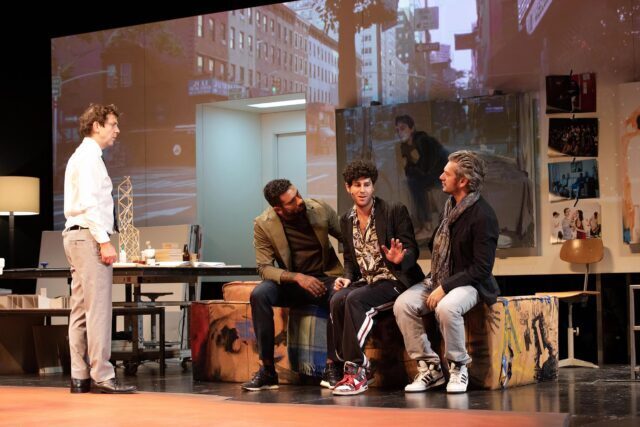
Four friends discuss life and love in A Little Life at BAM (photo © Julieta Cervantes)
Eventually, I started figuring out who is who. Four close friends from college are hanging out, talking about life and love. Willem Ragnarsson (Maarten Heijmans) is a handsome actor. Malcolm Irvine (Edwin Jonker) is a talented architect deciding whether he should leave a small company and work for a corporate firm. Jean-Baptiste “JB” Marion (Majd Mardo) is an artist who takes photographs of his friends and paints them on canvas. And Jude St. Francis (Ramsey Nasr) is a lawyer under the tutelage of his mentor, Harold (Jacob Derwig). Their banter is reminiscent of Mart Crowley’s queer classic, The Boys in the Band.
But as the plot turns primarily to Jude and his horrific past, adversity piled on adversity at the hands of men he trusted, a darkness hovers over everything. Jude refuses to talk about what happened to him as a child except with his therapist, Ana (Marieke Heebink), who he imagines is almost always there with him. As he recalls in flashback his treatment by Brother Luke, Caleb, and a man named Traylor (all played by Hans Kesting), involving sexual abuse and brutal violence, he turns more and more inward, unable to face truths that can set him free from the prison he has built around himself, one in which he has to cut himself to fight off the inner pain. He seeks help from his doctor, Andy Contractor (Bart Slegers), but that is only for the physical damage inflicted on him, and inflicted by him.
In the far superior second act, Willem attempts to bring some kind of solace to Jude, who wears the same bloodied shirt throughout, except when he’s naked, which is often. As he digs deeper into his troubled existence, every time there is the possibility of hope, misfortune rears its ugly head. But it makes for gripping theater; it is intense and thrilling, anchored by a stunning performance by Nasr, who is also a poet, writer, and director. He portrays Jude with a yearning agony that echoes throughout the theater and into your soul.
But then the man sitting two rows in front of me annoyingly turned his phone on and held it up, and I saw that it was eleven o’clock. I am not a clock watcher at shows; I don’t want to know how much time is left, as it can impact my experience and expectations. But knowing that there were still about fifteen minutes till the end, I had no idea where von Hove could take it from there. In the short remaining span, I counted five places where I thought the play was over — wanted it to be over — but it kept going, even adding a completely unnecessary coda that angered me, manipulating my emotions, telling me how I was supposed to feel. Tony, Obie, and Oliveier winner van Hove (A View from the Bridge, Scenes from a Marriage, Kings of War) had trusted us until then, so the finale felt like he was piling on, in some ways echoing the constant torment that engulfed Jude.
In a program note, van Hove explains, “A Little Life is not a book, it is an excess, an excess of words, feelings, sexual abuse, automutilations, and heroic attempts at love and friendship.” It is all that and more, in a play with an excess of about fifteen minutes.

